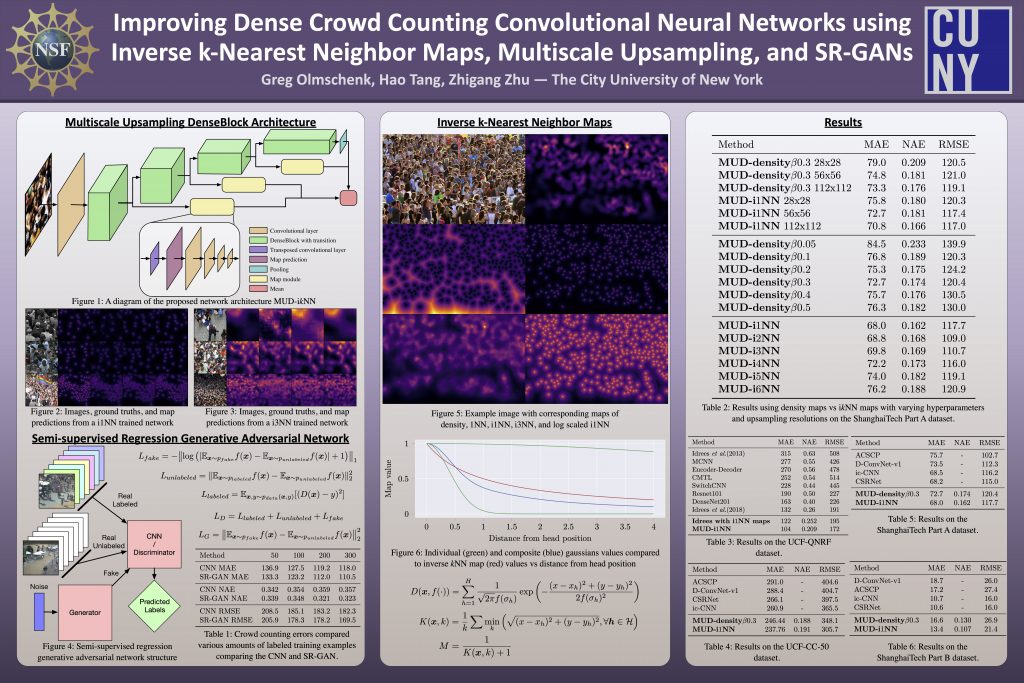Greg Olmschenk

Hi! I’m Greg Olmschenk. I’m a PhD student at the CCVCL. My focus is on machine learning, specifically, semi-supervised generative adversarial networks for regression. Below, you’ll find some selected projects I’m involved in. For a list of publications during my time with the CCVCL, please see the lab’s publications page.
Generalizing semi-supervised generative adversarial networks for regression

This work studies the generalization of semi-supervised generative adversarial networks (GANs) to regression tasks. A novel feature layer contrasting optimization function, in conjunction with a feature matching optimization, allows the adversarial network to learn from unannotated data and thereby reduce the number of labels required to train a predictive network. An analysis of simulated training conditions is performed to explore the capabilities and limitations of the method. In concert with the semi-supervised regression GANs, an improved label topology and upsampling technique for multi-target regression tasks are shown to reduce data requirements. Improvements are demonstrated on a wide variety of vision tasks, including dense crowd counting, age estimation, and automotive steering angle prediction. With training data limitations arguably being the most restrictive component of deep learning, methods which reduce data requirements hold immense value. The methods proposed here are general-purpose and can be incorporated into existing network architectures with little or no modifications to the existing structure.
For full details, see my dissertation. An early version of this work was published in the journal on Computer Vision and Image Understanding.
Improving dense crowd counting convolutional neural networks

Gatherings of thousands to millions of people frequently occur for an enormous variety of events, and automated counting of these high-density crowds is useful for safety, management, and measuring significance of an event. I have developed various techniques to improve deep convolutional neural networks for dense crowd counting. This includes: 1) the regression semi-supervised generative adversarial network (above); 2) a replacement ikNN labeling scheme which demonstrated improvements over the commonly accepted labeling scheme; and 3) an upsampling map module network component which can be inserted into most convolutional neural networks, and allows for the training to take advantage of full resolution crowd labels.
Smart and accessible transportation hub
The smart and accessible transportation hub has the goal of improving large transit facilities by making them more accessible to those with special needs, allowing an better experience for customers, and providing facility management the information they need to improve their services. More details about this project can be found here.
